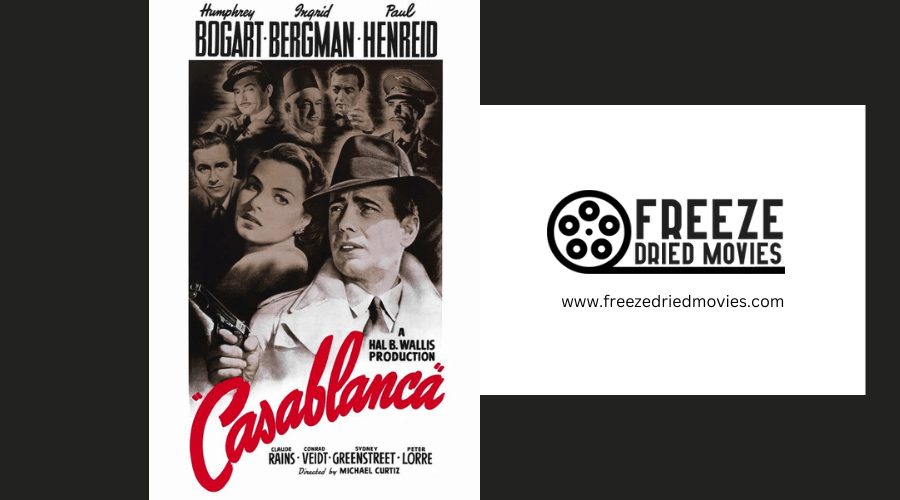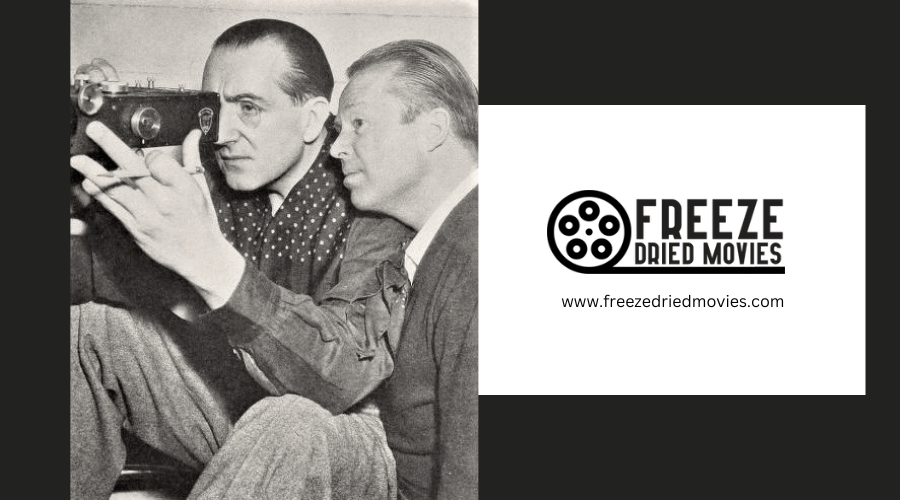What Were the Top Horror Films in the 1940s?
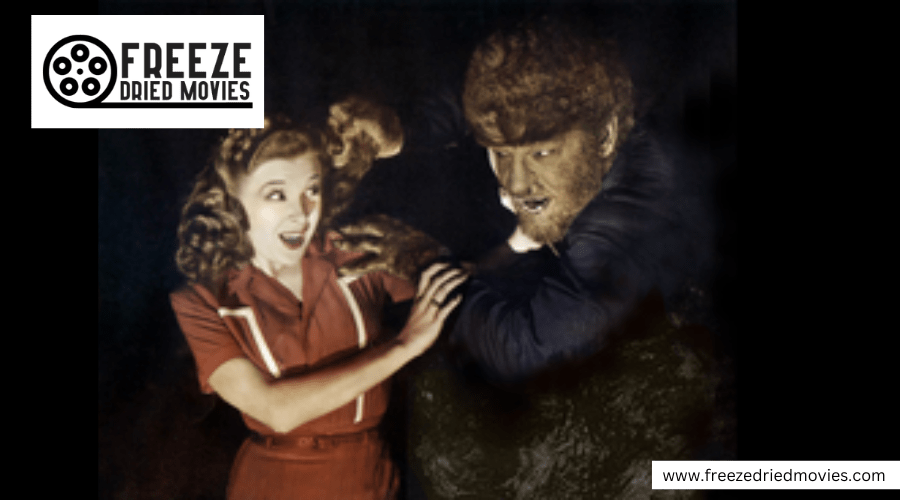
In the 1940s, the horror genre was defined by several key films. 'The Uninvited' (1944) was crucial in developing the haunted house genre, while 'The Wolf Man' (1941) played a significant role in establishing the lore surrounding werewolves that we recognize today.
'Cat People' (1942) introduced psychological complexity and early jump scares, and 'Abbott & Costello Meet Frankenstein' (1948) effectively merged horror with comedy. Additionally, 'I Walked With a Zombie' (1943) is noted for its atmospheric tension and creative narrative approach.
These films not only provided entertainment but also significantly influenced the development of horror cinema. Their impact and legacy continue to be felt in the genre.
The Uninvited (1944)
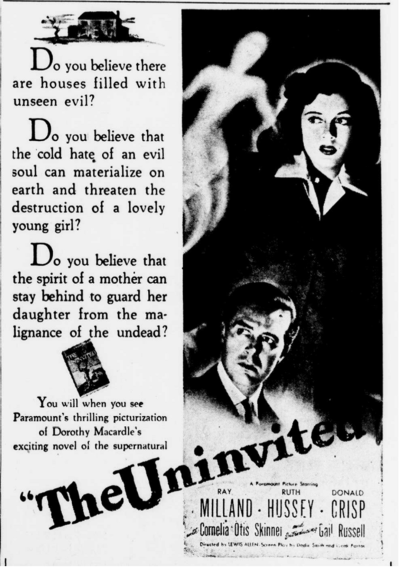
'The Uninvited,' directed by Lewis Allen and starring Ray Milland and Ruth Hussey, is a seminal horror film from the 1940s that effectively founded the haunted house genre. The film captivates with its eerie atmosphere and suspenseful plot, in which siblings played by Milland and Hussey accidentally purchase a haunted house. As they delve into the mysteries of their new home, the audience is immersed in a story rich with supernatural occurrences that became archetypal for future haunted house narratives.
This film is renowned for its pioneering approach to horror, maintaining high suspense and creating an atmosphere that's both beautiful and unnerving. Its impact is reflected in its critical acclaim and strong fan base, marking it as a significant work in the horror film genre.
'The Uninvited' is crucial for its introduction of elements that would shape the haunted house story in cinema, merging psychological intrigue with supernatural elements. It's a cornerstone film for horror enthusiasts and a model for filmmakers, illustrating how to effectively blend fear with a compelling storyline.
The Wolf Man (1941)
In the 1941 film 'The Wolf Man,' Lon Chaney Jr. delivers a seminal performance that greatly influenced the portrayal of werewolves across various media. Directed by George Waggner, the movie is celebrated for its pioneering makeup and prosthetics, which vividly bring Chaney Jr.'s character's transformation to life. His portrayal of a man cursed with lycanthropy encapsulates a struggle against a terrifying transformation, making the film a key work in horror cinema.
The cast, including notable actors such as Claude Rains and Warren William, enhances the film's chilling atmosphere. 'The Wolf Man' is a milestone not only for its technical achievements but also for setting a narrative standard in the depiction of werewolf lore.
As an iconic piece from the 1940s, it continues to be a focal point in discussions about the evolution of the horror genre. It maintains its status with a strong following in the horror community, evidenced by its significant viewership and ratings.
Cat People (1942)
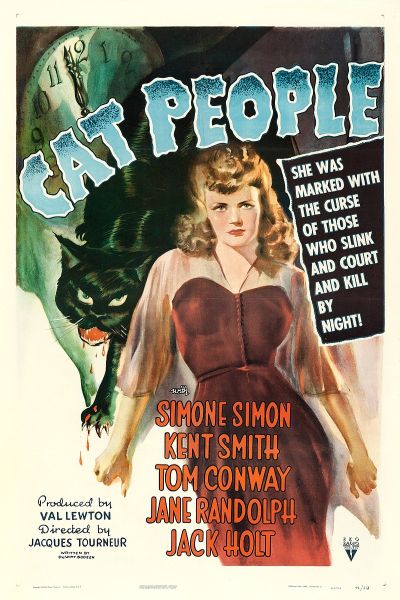
Directed by Jacques Tourneur, the 1942 film 'Cat People' artfully examines themes of female sexuality and empowerment within the horror genre. The narrative masterfully combines psychological horror with a tense atmosphere, featuring subtle yet powerful storytelling techniques. The film stars Simone Simon, Tom Conway, Kent Smith, and Jane Randolph and is celebrated for pioneering the use of the jump scare, effectively keeping audiences in suspense.
In 'Cat People,' the focus isn't merely on horror but on the deep psychological exploration of its main character, played by Simone Simon. Her portrayal effectively conveys the struggles of a woman dealing with her own identity and the societal expectations surrounding her. The film's approach to female sexuality was forward-thinking for its era.
The film's commercial success, evidenced by gross revenue of $4 million, and its critical acclaim highlight its significance and enduring appeal. 'Cat People' is recognized as a groundbreaking film that established new standards for narrative complexity in horror cinema, resonating with contemporary audiences and critics alike.
Abbott & Costello Meet Frankenstein (1948)

Dive into the unique world of horror-comedy with 'Abbott & Costello Meet Frankenstein' (1948), a film that skillfully combines scares with laughter. This classic movie not only entertains but also marks a pivotal point in the genre, blending iconic horror characters with comedic elements seamlessly.
The film features legendary actors in roles that have captivated audiences for generations. Bela Lugosi reprises his iconic role as Dracula, adding a charismatic presence that enhances the comedic undertone of the movie. Glenn Strange plays Frankenstein's Monster, evoking both sympathy and fear, while Lon Chaney Jr., as the Wolf Man, contributes thrilling moments of terror.
Here's a brief overview of the characters and their contributions to the film's horror-comedy dynamic:
| Monster | Actor | Role in Comedy-Horror |
|---|---|---|
| Dracula | Bela Lugosi | Charismatic and humorous |
| Frankenstein's Monster | Glenn Strange | Sympathetic yet frightening |
| Wolf Man | Lon Chaney Jr. | Intense yet comic scares |
'Abbott & Costello Meet Frankenstein' is more than just a movie; it is an experience that demonstrates the effective fusion of horror and humor, allowing audiences to enjoy both laughter and fright within the same context.
I Walked With A Zombie (1943)
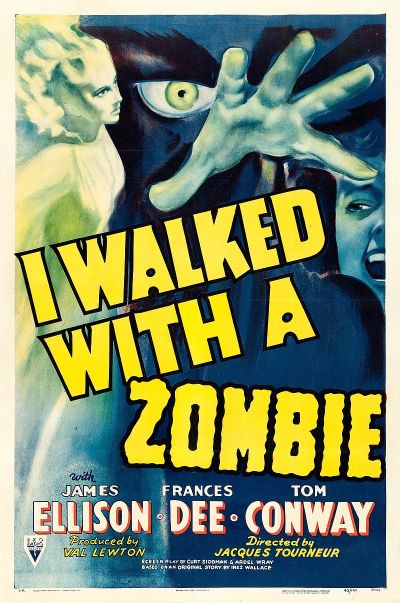
Moving away from the comedic frights of 'Abbott & Costello Meet Frankenstein,' the 1943 film 'I Walked With A Zombie' introduces a darker and more immersive horror experience. Produced by Val Lewton, the movie is set against the enigmatic backdrop of the West Indies and envelops viewers in a world where eerie voodoo traditions thrive.
Here are compelling reasons to watch this distinctive horror classic:
- Atmospheric Setting: The West Indies provide a hauntingly beautiful setting that amplifies the film's chilling narrative, deeply rooted in voodoo lore.
- Psychological Depth: The film delves into intricate human relationships and psychological horror, echoing the themes of love, betrayal, and gothic mystery reminiscent of 'Jane Eyre'.
- Supernatural Elements: Voodoo and other supernatural aspects are central to the plot and offer a unique take on the zombie genre, steering clear of typical undead clichés.
- Innovative Production: This film is distinguished by Val Lewton's mastery of creating tense, suggestive horror. It capitalizes on the unseen, engaging the viewer's imagination to a profound extent.
'I Walked With A Zombie' isn't merely a horror film; it's an exploration of a complex narrative where every shadow and sound may hold hidden depths. This film remains a crucial part of 1940s horror cinema, continuing to enthrall modern audiences with its timeless appeal.
The Body Snatcher (1945)

Dive into the chilling narrative of 'The Body Snatcher' (1945), where horror legends Boris Karloff and Bela Lugosi masterfully enact a story of grave-robbing and ethical dilemmas inspired by Robert Louis Stevenson's compelling short story. This film marks the last collaboration between Karloff and Lugosi and represents a notable piece of 1940s horror cinema with its eerie atmosphere and gripping plot.
'The Body Snatcher' transcends typical horror, delving into psychological thriller territory as it probes deep moral questions. Karloff's compelling depiction of the menacing cabman John Gray offers a profound look at a morally ambiguous character, while Lugosi's performance adds depth, enhancing the film's complex narrative. Their interaction forms a haunting dynamic that captures the audience's attention.
Esteemed by over 10,000 horror fans, the film is recognized not only as a cult classic but also as an important cultural artifact that demonstrates the enduring power of Stevenson's narrative and the exceptional capabilities of its cast. Engage with 'The Body Snatcher' to experience a historically significant film that continues to resonate with and frighten viewers.
Dead of Night (1945)
Immerse yourself in the chilling atmosphere of 'Dead of Night' (1945), a seminal horror anthology that masterfully interweaves five terrifying tales. Set against the haunting backdrop of an eerie manor, this film is a landmark in horror cinema, known for its innovative narrative structure and deeply unsettling ambiance.
Here's why 'Dead of Night' is a must-see for horror fans:
- Atmospheric Setting: The haunting manor setting not only amplifies the sense of dread but also seamlessly ties the stories together, enhancing viewer immersion.
- Pioneering Format: The film was among the first to employ an anthology format, skillfully connecting disparate, eerie stories into a cohesive, engaging narrative.
- Iconic Segments: The segment featuring the ventriloquist and his unnervingly lifelike dummy is especially memorable, epitomizing the blend of psychological horror and suspense.
- Lasting Legacy: Celebrated for its influence, 'Dead of Night' has inspired countless films and continues to resonate with audiences, as evidenced by its strong ratings and reviews on major film platforms.
'Dead of Night' (1945) stands as a quintessential example of how to effectively build suspense and evoke fear. Its creative use of setting, narrative structure, and character development has established a standard in the horror genre, making it essential viewing for enthusiasts and scholars alike.
The Picture of Dorian Gray (1945)
Delve into the themes of moral decay in the 1945 film adaptation of Oscar Wilde's novel, 'The Picture of Dorian Gray.' Hurd Hatfield's performance as Dorian Gray masterfully illustrates the eerie consequences of trading moral integrity for eternal youth. His portrayal highlights the gradual degradation of Dorian's soul, concealed behind his unchanging youthful appearance.
George Sanders and Angela Lansbury contribute significantly to the narrative; Lansbury's role earned her an Academy Award nomination. Sanders skillfully plays Lord Henry, whose cynical worldview catalyzes Dorian's moral downfall. The performances of both actors are vital in advancing the central themes of the story.
A noteworthy film technique is the use of color to accentuate horror elements, particularly in scenes showing the portrait that ages and decays in Dorian's stead. This use of color not only enhances the visual impact but also symbolizes the hidden corrupt nature of Dorian's actions.
The adaptation remains a poignant exploration of the dangers of vanity and unchecked hedonism. It continues to resonate as a critique of the darker aspects of human nature and the perilous consequences of a life devoid of ethical boundaries.
Frequently Asked Questions
Why Did Horror Movies Fall in Decline During the 1940s?
The decline of horror movies in the 1940s can be attributed to several factors. The enforcement of the Hays Code imposed strict censorship that limited the thematic and visual content of horror films, stifling the genre's development. Additionally, the economic repercussions of World War II redirected film industry resources and audience interest towards other genres like film noir, which better captured the era's prevailing sentiments. Moreover, the horror genre faced a decline in creativity and innovation, leading to an oversaturation of predictable monster movies that failed to engage audiences.
What Is the Old Number One Horror Movie?
If you're interested in a classic horror film, consider 'The Wolf Man' from 1941. This movie, featuring Lon Chaney Jr. as the werewolf, greatly influenced the horror genre with its iconic portrayal.
What Was the Golden Era of Horror Movies?
The golden era of horror movies is widely considered to be the 1930s and 1940s. This era saw the release of iconic films such as "Frankenstein" (1931) and "Dracula" (1931), which set the foundation for the horror genre and continue to influence filmmaking. These decades were pivotal in shaping the conventions and aesthetics associated with classic horror cinema.
What Was the Most First Horror Film?
If you're interested in the origins of horror cinema, 'Le Manoir du Diable' (The House of the Devil), created by Georges Méliès in 1896, is recognized as the first horror film. This silent movie predates other horror films by several decades.
Conclusion
You've just explored the top horror films of the 1940s, a decade marked by iconic cinematic scares. From the ghostly suspense of 'The Uninvited' to the eerie transformations in 'The Wolf Man,' these films are fundamental to horror's rich history.
Whether it was the psychological intrigue of 'Cat People' or the comedic horror in 'Abbott & Costello Meet Frankenstein,' each movie made a memorable impact. Also noteworthy are 'I Walked With a Zombie' and 'The Body Snatcher,' which further exemplify the era's fascination with supernatural and macabre themes.
These films remain enduring classics, capturing the essence of 1940s horror.


